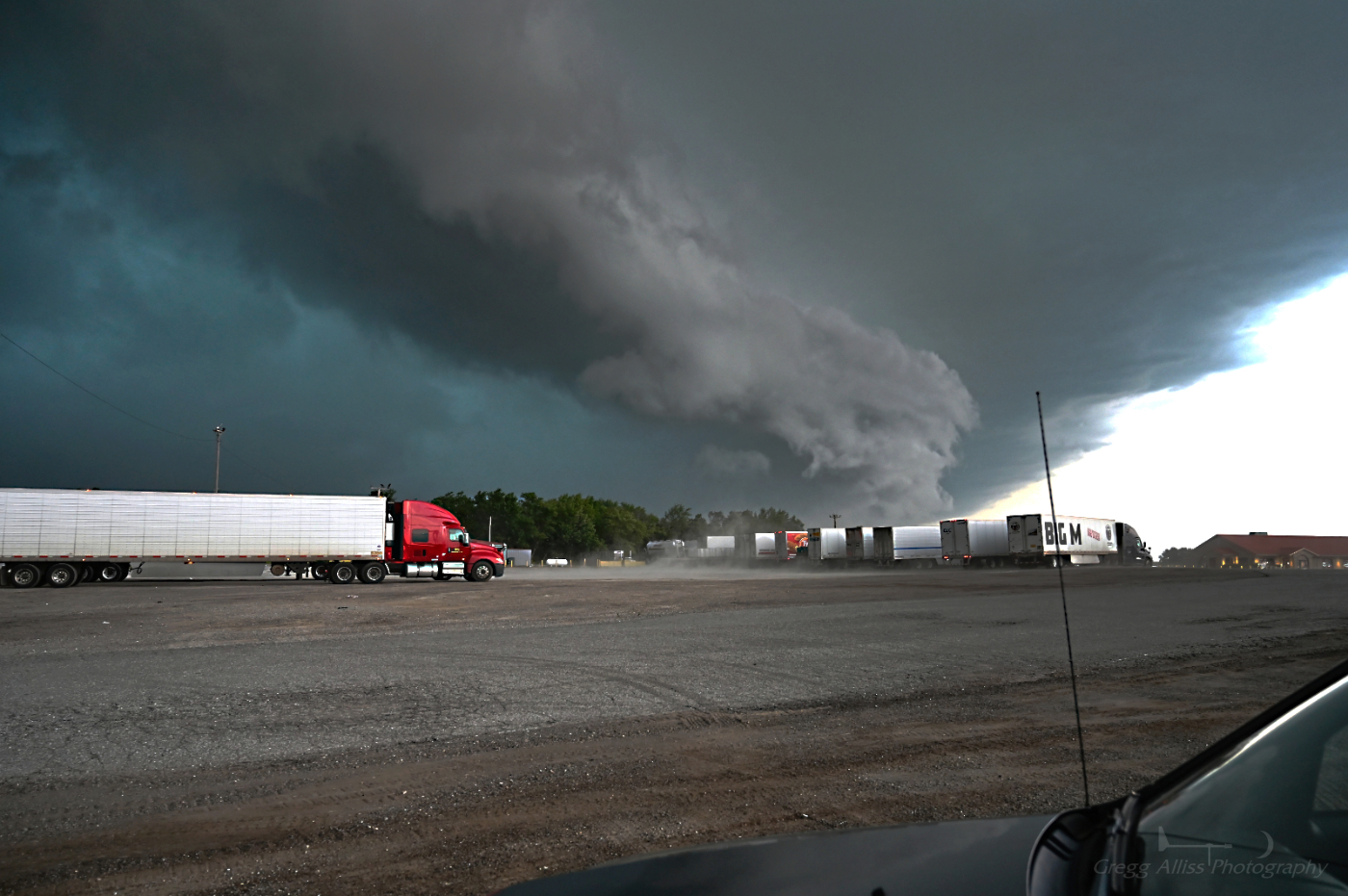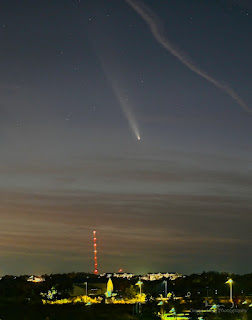During a time of active solar activity, a predicted event for Thursday, October 10, 2024 looked to be even better. The notification shown above from spaceweather.com on October 9, hinted at G4 to even G5 geomagnetic severe storm levels, which could produce communication disruptions and vivid auroral diplays (Northern Lights).
6:49 pm CDT, Thursday, October 10, 2024. Evening is coming with clear skies, and I selected my aurora viewing location--about 1.1 miles east of Highway 13 northeast of Marion, Iowa (42° 4'18.79"N, 91°32'7.19"W) on Tower View Road. iPhone 11 camera.
7:03 pm. Solar wind data and auroral forecast the Auroral Alerts application, showing promising readings.
7:21 pm. Looking north. The faint shapes of aurora are starting to materialize, despite light disruption from a half-moon. 8 second exposure at f/4, ISO 320, 24mm focal length.
7:32 pm. Looking north. Light pillars from the brightening aurora are becoming evident. 15 second exposure at f/4, ISO 320, 24mm focal length.
7:46 pm. Looking north. Some violet pillars form (left). 13 second exposure at f/4, ISO 500, 24mm focal length.
7:52 pm. Solar wind data and auroral forecast. Note the area of severity in the right panel (red).
8:08 pm. More pillars are forming as the aurora intensifies. 10 second exposure at f/4, ISO 500, 24mm focal length.
8:32 pm. Solar wind data and auroral forecast. Severe red areas have penetrated the northern tier states of the U.S.
8:34 pm. Looking northwest. Red aurora are beginning to form in the geomagnetic storm. Red auroras are caused when solar particles "excite" oxygen atoms at higher altitudes--indicating strong activity, while greens are from oxygen atoms at lower altitudes. 13 second exposure at f/4, ISO 500, 24mm focal length.
8:43 pm. Looking northwest. 20 second exposure at f/4, ISO 200, 24mm focal length.
8:46 pm. Looking north. Brighter auroras beginning to form as storm intensifies. 15 second exposure at f/4, ISO 320, 24mm focal length.
8:52 pm. Looking northwest. Reds, violets and greens showing. 20 second exposure at f/4, ISO 250, 24mm focal length.
8:51 pm solar wind data and 9:04 pm auroral forecast.
8:55 pm. Similar view looking northwest. 20 second exposure at f/4, ISO 200, 24mm focal length.
8:57 pm. Similar view. Red auroras intensifying. 20 second exposure at f/4, ISO 160, 24mm focal length.
9:00 pm. Looking northeast. Reds and greens in bright aurora display. 20 second exposure at f/4, ISO 160, 24mm focal length. 6 second exposure at f/4, ISO 500, 24mm focal length.
9:04 pm. Looking north. Blends of reds and greens. Aurora is exhibiting a "curtain" look. 13 second exposure at f/4, ISO 200, 24mm focal length.
9:09 pm. Looking northwest. Note the Big Dipper at right. 15 second exposure at f/4, ISO 160, 24mm focal length.
9:16 pm. Looking northwest. Storm intensity is beginning to subside. Shortly after this image was captured, I returned home. This geomagnetic storm was comparable to the April 23, 2023 event, but since this time there was a half-moon disrupting the dark skies, I was not able to witness what I called in 2023 "ripples in the atmosphere phenomena." The storm continued at diminished levels through the night. 15 second exposure at f/4, ISO 125, 24mm focal length. Nikon Z6ii camera.
Read more...























































